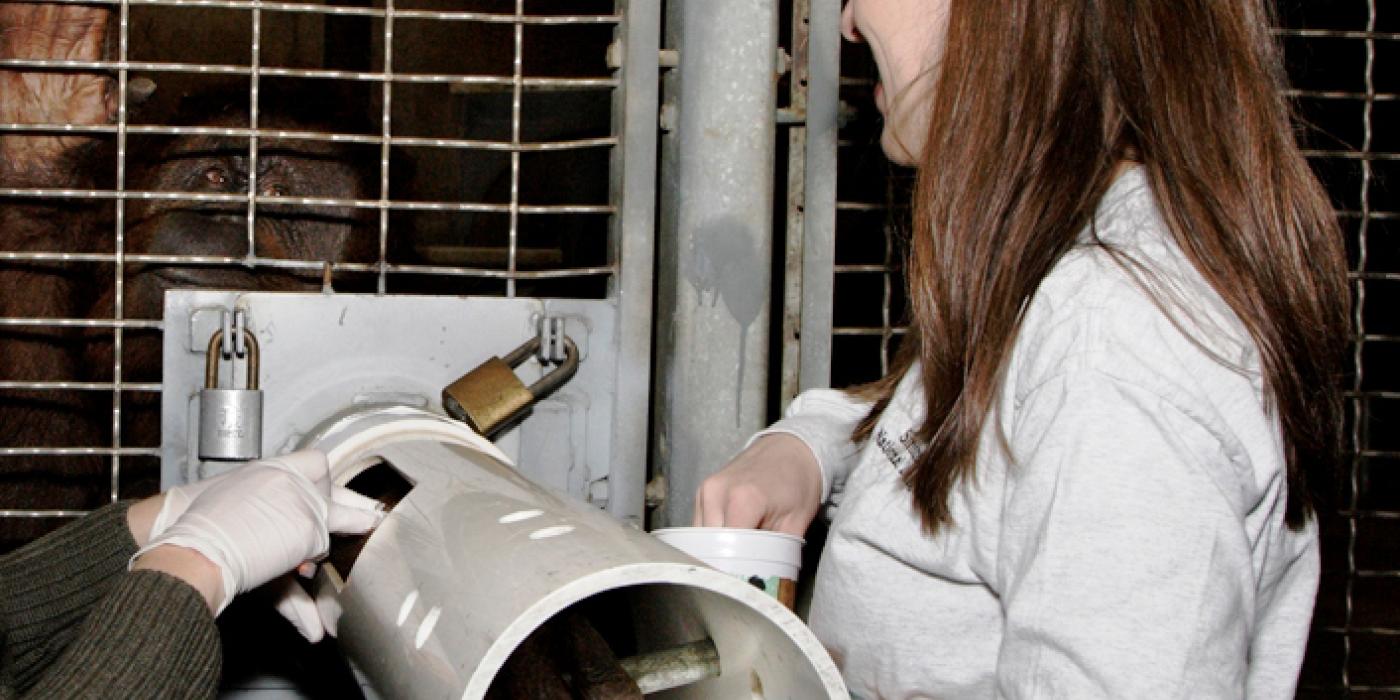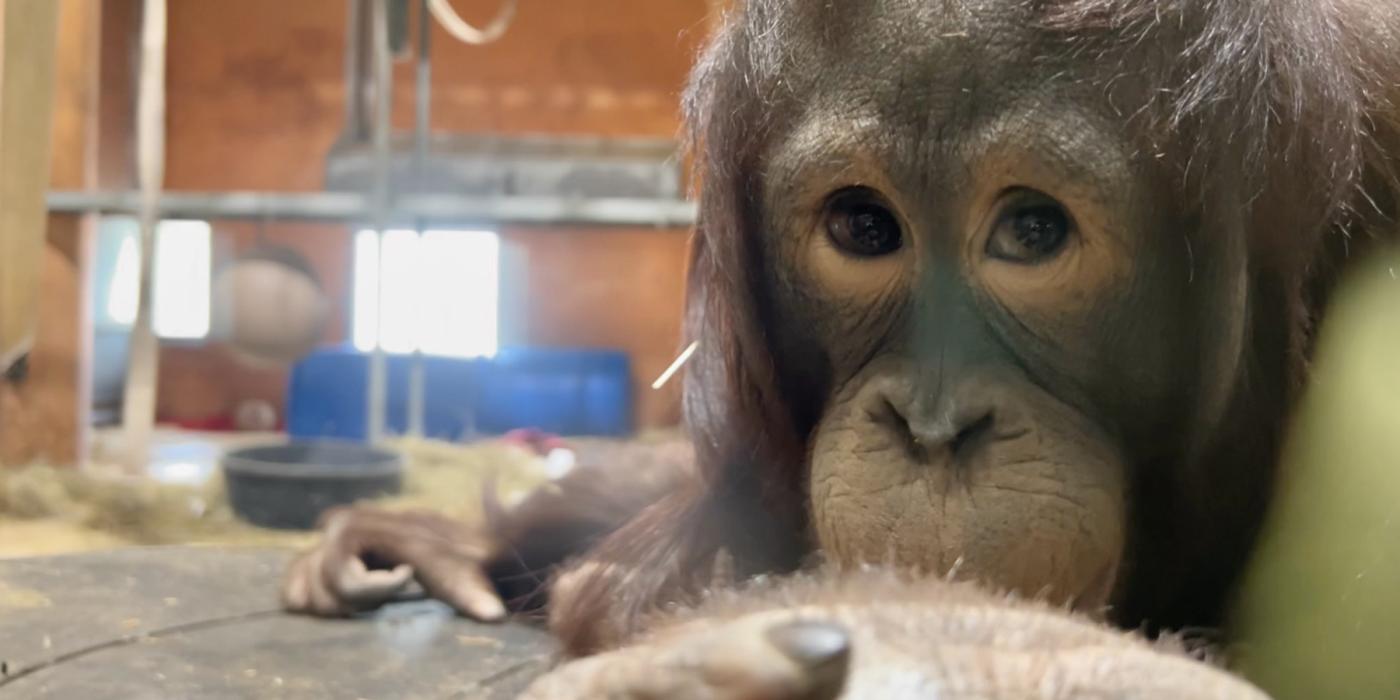Good News for Great Apes
What’s a zoo to do when an orangutan has the sniffles? Treatment depends on whether the infection is viral or bacterial, says Priscilla Joyner, the Smithsonian Conservation Biology Institute’s (SCBI’s) veterinary medical officer. She has teamed up with colleagues at the University of Miami to develop a test that could lead to quicker diagnoses and treatments, which is good news for great apes.
How did the idea for this study come about?
I was approached by Carolyn Cray of the University of Miami, who had previously worked with SCBI to study biomarkers in a variety of species. The inspiration for studying orangutan respiratory infection came from one of her colleagues who traveled to a sanctuary for orphaned orangutans in Indonesia. When she spoke to the staff, they expressed concern that some of the orangutans in their care had chronic bacterial infections.
Often, if an animal has a respiratory illness, it may have a runny nose or cough. Occasionally, though, animals will try to mask any signs of illness. In zoos, orangutans have a high incidence of respiratory disease with minimal to no clinical signs, which can persist for years and lead to increased mortality.
How do you test for respiratory infection?
Generally, examining an animal like an orangutan means putting it under anesthesia. We can then take samples and run diagnostic tests. Typically, we look at red and white blood cell counts, we do a biochemistry profile, and we also might take radiographs. These diagnostics combined can indicate whether or not an animal has a bacterial or viral infection.
There are also ways to examine an animal without the need for anesthesia. For example, keepers at the Great Ape House work with the Zoo’s veterinarians to train the orangutans to participate in their own medical care, including blood draws.
In her lab, Dr. Cray examines blood samples to look for non-invasive biomarkers in sick and healthy animals. When cells and tissue undergo damage – either from trauma or infection—they release something called acute phase proteins, which appear in an animal’s blood. By examining the sample, we can see which proteins are responding and determine if there is inflammation in an animal’s body, even if it doesn’t appear to be sick.
How can acute phase proteins make diagnosing easier?
Blood samples are collected as part of a regular health exam, but they can also be collected when keepers and veterinarians surmise that an animal is ill. Additional diagnostic tests, such as acute phase proteins, are sensitive enough to detect infection and inflammation even when an animal is hiding its illness.
Dr. Cray’s lab is working on validating a technique for testing acute phase proteins using a lateral flow device which would allow for more rapid testing. This allows veterinarians to obtain quick results and develop targeted treatments.
How do you test for acute phase proteins?
For our preliminary study, we sent blood samples that were collected from the Zoo’s orangutans in the past 5 to 10 years to Dr. Cray’s laboratory. Dr. Cray looked at Serum Amyloid A—a very sensitive acute phase protein in several species of animals. If an animal has inflammation, the level of Serum Amyloid A would be very high. As the inflammation goes down, so should the Serum Amyloid A level. Eventually, it will go down to normal indicating there’s no inflammation present.
What were the results of the test?
From what we’ve seen so far, the acute phase proteins that we thought would be helpful in determining inflammation are working with orangutans, just as they have worked for other species. However, we have only done preliminary testing at this point. Our next step is to test more samples, preferably from animals of varying age and condition.
Are you hoping to study these proteins in orangutans at other zoos?
Yes, very much so. We approached the Association of Zoo and Aquariums’ Species Survival Plan for Orangutans and obtained approval to reach out to zoos that may want to participate. Our intern, Sarah Beerbower, is reviewing medical records from 15 to 20 zoos and selecting samples that demonstrate an array of sex, age and health characteristics. This diversity in sampling is necessary in order to establish meaningful reference ranges for orangutans.
What difference could this test make in an orangutan’s care?
We hope that over time, examining the acute phase protein response in orangutans will increase the quality of life and health of animals in human care. This line of testing can also help in monitoring and treating habituated and semi-habituated orangutans, like those at orphanages in Indonesia.
The flexibility and sensitivity of the test has the potential to greatly aid in the protection and care of this critically endangered species.
Related Species:






